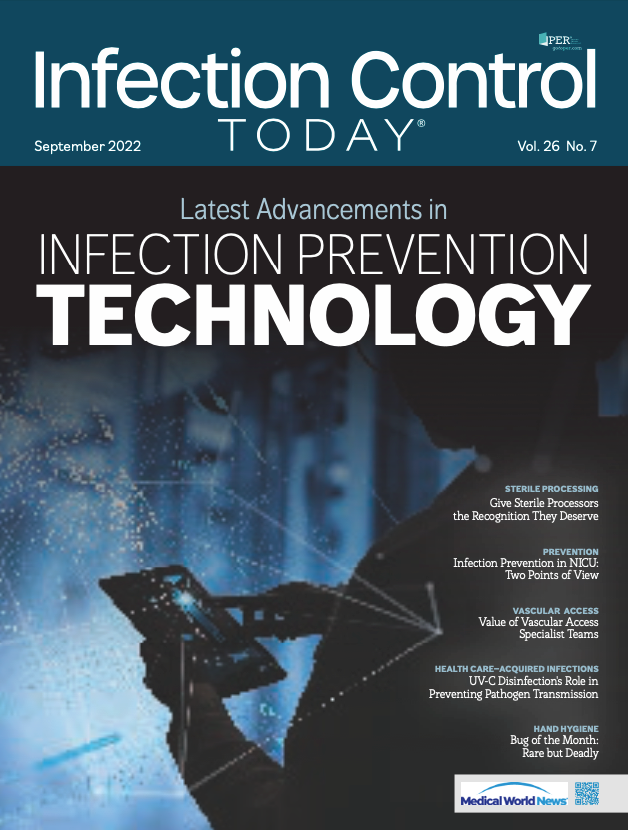Is Dry Heating or UV Disinfection Safe and Effective for Reusing N95 Respirators?
Certain disinfecting cycles can be used to extend the frequency and use of single-use respirators, but how do they affect the respirator filtration efficiency?
Hanging masks after disinfection (Adobe Stock)

Short-term shortages and reuse of disposable respirators can be due to aerosol-borne diseases such as COVID-19. Because of these situations, the Centers of Disease Control in many countries and the World Health Organization recommend extending the frequency and length of use time of single-use respirators when appropriate.However, those organizations have not specified which disinfection method should be required and duration of reuse should be allowed.
Various disinfecting options include soap or hot water immersion, alcohol spraying, high-pressure steam, dry heating, UV radiation, vaporized hydrogen peroxide, ethylene oxide, and moist heat. While previous studies have confirmed that dry heating and UV radiation can be used to disinfect respirators without damaging their protective performance, these disinfection cycles were continuously performed one after another. In addition, the filtration efficiencies stated in previous studies were only for unused respirators disinfected repeatedly.
To remedy that lack, investigators of a study, “Filtration efficiency of N95 filtering facepiece respirators during multi-cycles of “8-hour simulated donning + disinfection” recently published in The Journal of Hospital Infection noted that in addition to not using soiled respirators to check for filtration efficiency, “There is a lack of investigation on the change of filtration efficiency before and after each cycle of disinfection for reused respirators.” The investigators also explained that “Existing research mostly adopts a constant flow to test respirators, which neither reflects the breathing flow pattern nor simulates the exhaled hot and humid air…In view of [these] research gaps, this study quantitatively explored the changes in filtration efficiency of N95 respirators during multi-cycles of ‘8-hour simulated donning + disinfection.’”
The investigators expected the research results of 3 N95 filtering respirators to provide reference for the reusable duration and frequency of multi-cycles disinfected respirators.
Multi-cycles of dry heating and UV radiation treatments on the reused (ie, multiple 8-hour donning) N95 respirators have a minimal effect, at greater than 0.5%, on the respirator filtration efficiency.All tested N95 respirators are able to maintain filtration efficiencies equal to or greater than 95% for at least 30 hours or 4 reuse cycles of “8-hour donning + disinfection,” even at 85 L/min. Even further, a lower breathing flow rate (15 L/min) plus the exhalation valve can further extend the N95 respirator functional duration up to 140 hours or 18 reuse cycles of “8-hour donning + disinfection.” As the respirator is worn longer, aerosol penetration slowly increases in a quadratic function with a negative second-order coefficient, and the penetration increment during each cycle of 8-hour donning is less than 0.9%. Therefore, the multi-cycle N95 respirator reuse and dry heating or UV irradiation disinfection are realistic.
“However, since most current respirators use electret filters as the filtration materials, disinfection treatments in the form of aqueous solutions or steam, such as soap or hot water immersion, alcohol spraying, and high-pressure steam, will neutralize the static charge on the filters, resulting in a significant decrease in the filtration efficiency of respirators,” the investigators wrote. “Dry heating, UV radiation, and vaporized hydrogen peroxide are disinfection methods that have been proven to be effective in inactivating microorganisms without compromising the respirator filtration efficiency.”
Of these options, vaporized hydrogen peroxide, which requires specialized equipment, is overly difficult compared to microwave ovens for dry heating and ultraviolet lamps for UV radiation.
Other experts agree. “VHP is the most time-consuming, requiring a decontamination period lasting 40 to 45 minutes, not including the time required for several other critical steps in the process, including the vaporization of liquid hydrogen peroxide,” Christina Yen, MD, Ahmed Abdul Azim, MD, Preeti Mehrotra, MD, MPH, wrote in Infection Control Today®. Therefore, both dry heating and UV disinfection methods are applicable to disinfection of reused respirators.

Robust infectious disease surveillance, including rapid subtyping of influenza A, is essential for early detection, containment, and public health reporting of novel viral threats.